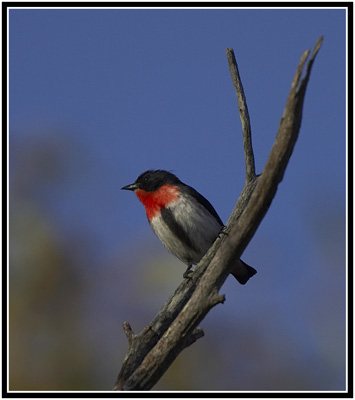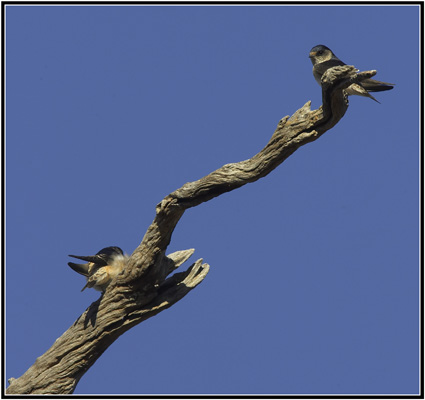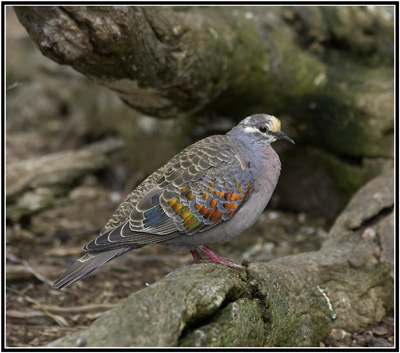| |
| Home |
| Activities Calendar |
| Birding Sites |
| Newsletter Archive |
| Recent Outings |
| Photography Group |
| Contact Us |
| You Yangs Regional Park |
|
Access: Branch Road (Page 11 Grid C12) Facilities: Parking, toilets, BBQ’s, Visitor Centre Common Bronzewing; Whistling Kite; Galah; Sulphur-crested Cockatoo; Purple-crowned Lorikeet; Eastern Rosella; Red-rumped Parrot; Laughing Kookaburra; Superb Fairy-wren; Yellow-rumped Thornbill; Brown Thornbill; Spotted Pardalote; White-plumed Honeyeater; Red Wattlebird; New Holland Honeyeater; Black-faced Cuckoo-shrike; Rufous Whistler; Grey Shrike-thrush; Australian Magpie; Grey Fantail; Willie Wagtail; Little Raven; Magpie-lark; White-winged Chough; Eastern Yellow Robin; Welcome Swallow. Other Possible Birds include: Australian Wood Duck; Straw-necked Ibis; Brown Goshawk; Wedge-tailed Eagle; Brown Falcon; Long-billed Corella; Fan-tailed Cuckoo; White-throated Treecreeper; Weebill; Striated Thornbill; Yellow Thornbill; Striated Pardalote; Yellow-faced Honeyeater; Black-chinned Honeyeater; Brown-headed Honeyeater; Crested Shrike-tit; Golden Whistler; Olive-backed Oriole; Dusky Woodswallow; Restless Flycatcher; Jacky Winter; Scarlet Robin; Silvereye; Tree Martin; Common Blackbird; Mistletoebird; Red-browed Finch; Diamond Firetail; European Goldfinch. Outings Bird Lists: For a Bird List of all recent BirdLife Melbourne Outings to this site, click here
Mistletoebird
|
|
||


